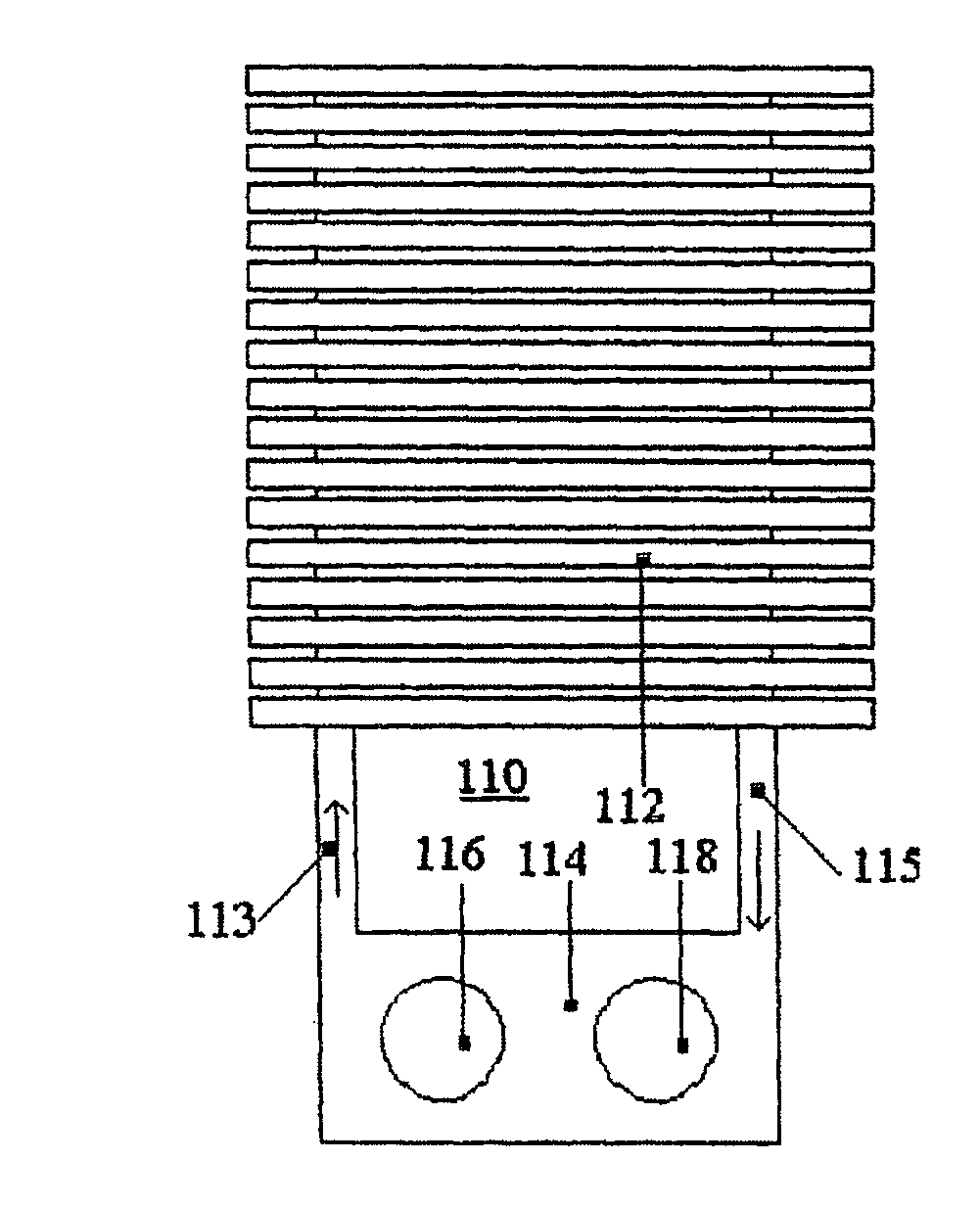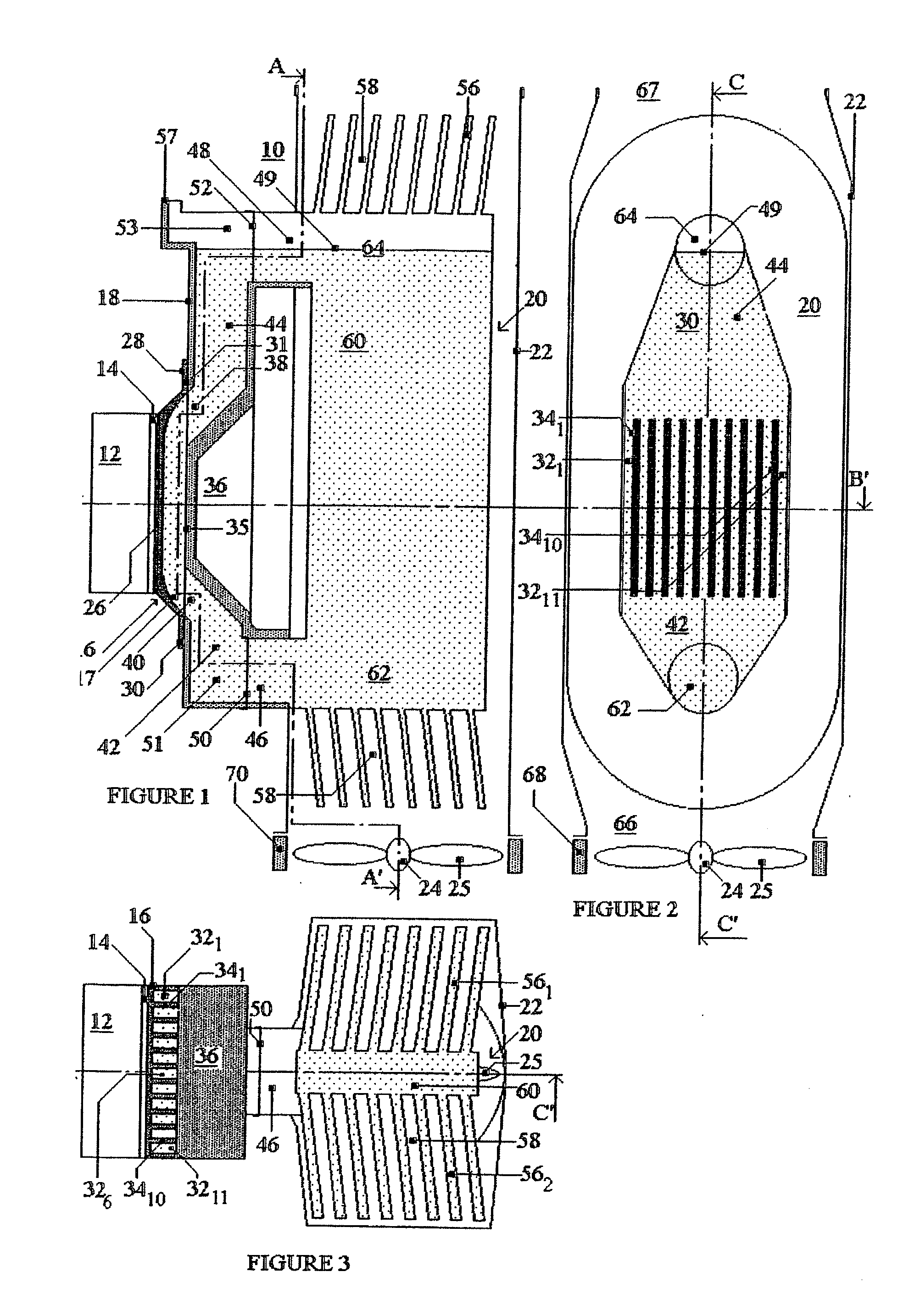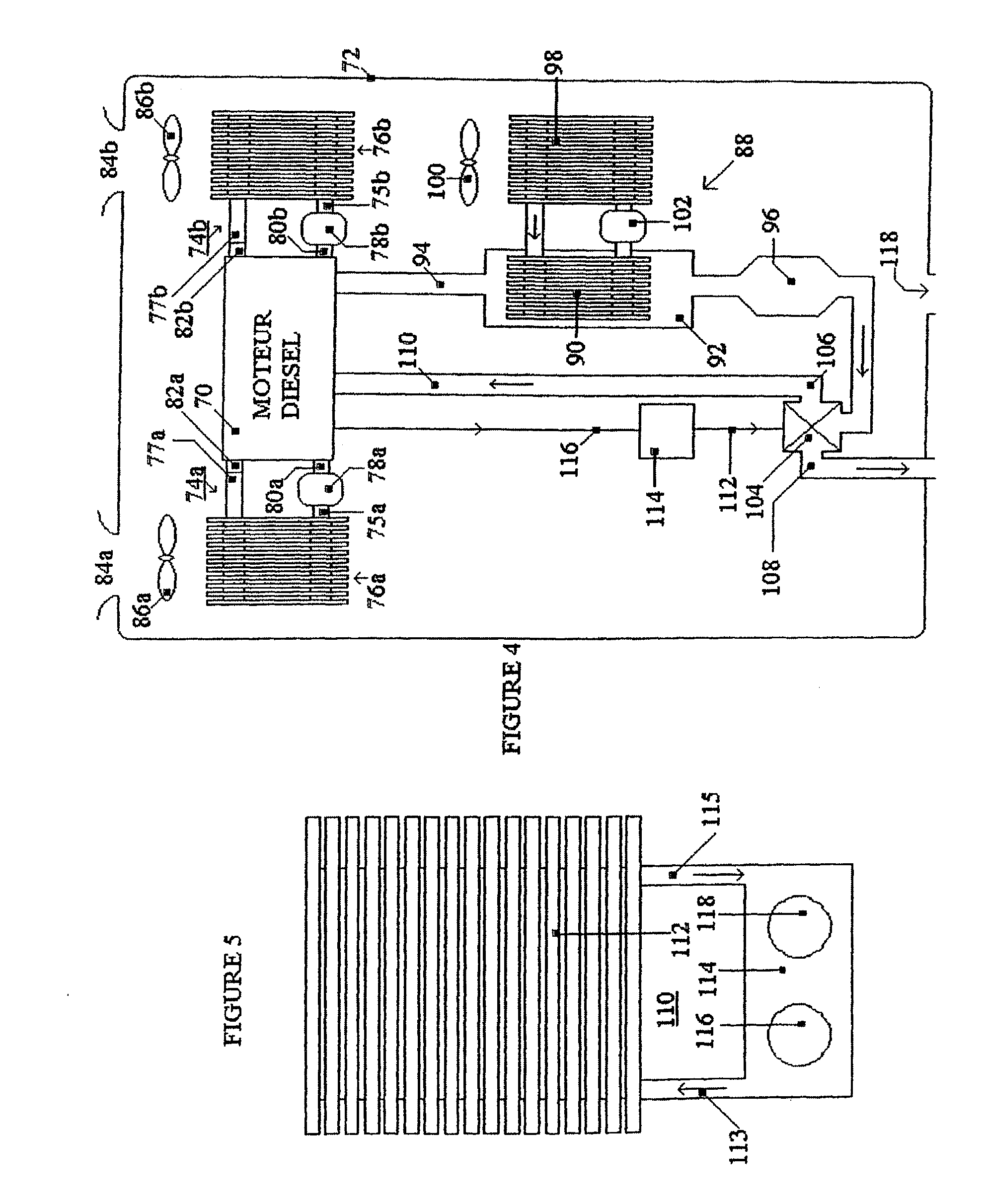Cooling devices for various applications
a technology for cooling devices and applications, applied in the direction of cell components, instrumentation, and semiconductor/solid-state device details, etc., can solve the problems of unison of design, poor thermal resistance, and large volume of pumps for computers with small dimensions, and achieve the effects of low cost, low cost, and not bulky
- Summary
- Abstract
- Description
- Claims
- Application Information
AI Technical Summary
Benefits of technology
Problems solved by technology
Method used
Image
Examples
Embodiment Construction
[0132] According to the first three figures, a cooling device 10, according to the invention, is installed vertically. It is coupled and fixed, by any appropriate means, to a microprocessor 12, capable of generating a thermal power of 120 Watts. This heat flow must be evacuated through a square precision-ground plate 14 for thermal dissipation, with sides of 35 mm (i.e. an average density of 10 W / cm2), so that its average temperature remains less than 70° C. for example. The cooler 10 comprises a mini-heater 16, a rigid hose 18, a radiator 20, a jacket 22 and a fan 24.
[0133] The mini-heater 16 is formed by a copper heating plate 17, applied to the hose 18. This heating plate 17 has a total thickness of 10 mm and it has an outer thermal coupling face 26, which is square and precision-ground and has 35 mm sides, connected by two inclines at its fixing edges 28-30, 10 mm wide, as well as a bottom 2 mm thick and side walls 1 mm thick. The internal face 31 of this heating plate 17 compr...
PUM
| Property | Measurement | Unit |
|---|---|---|
| thickness | aaaaa | aaaaa |
| thickness | aaaaa | aaaaa |
| thickness | aaaaa | aaaaa |
Abstract
Description
Claims
Application Information
 Login to View More
Login to View More - R&D
- Intellectual Property
- Life Sciences
- Materials
- Tech Scout
- Unparalleled Data Quality
- Higher Quality Content
- 60% Fewer Hallucinations
Browse by: Latest US Patents, China's latest patents, Technical Efficacy Thesaurus, Application Domain, Technology Topic, Popular Technical Reports.
© 2025 PatSnap. All rights reserved.Legal|Privacy policy|Modern Slavery Act Transparency Statement|Sitemap|About US| Contact US: help@patsnap.com



